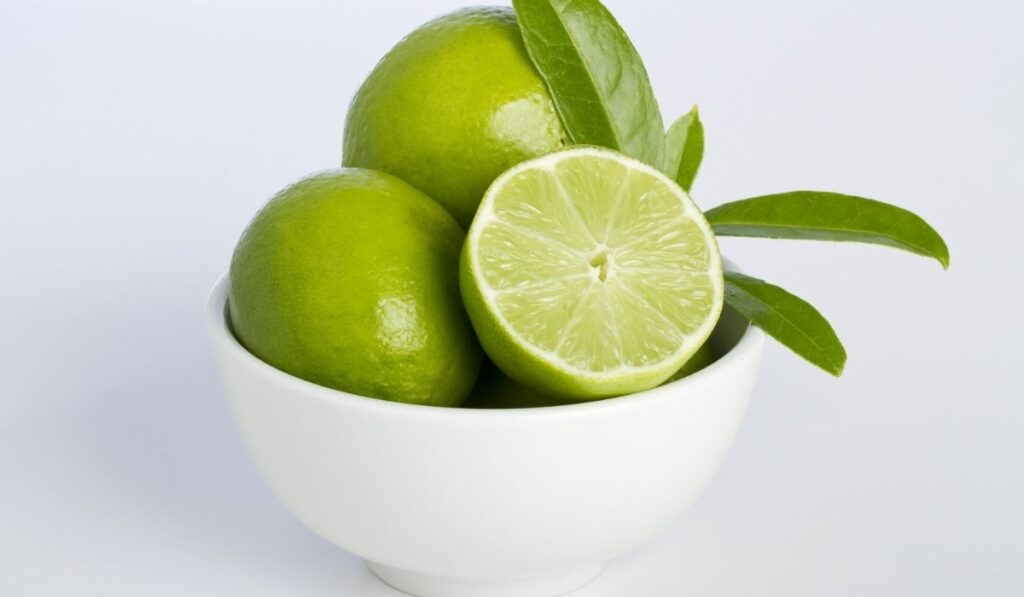When asked to describe lime, most individuals would describe a tiny, hard, green fruit. Although this is partially correct, did you know that we’re used to having limes that aren’t entirely ripe? When fully ripe, limes actually have a yellow color and a rough texture. So now that you know the truth about limes, when are they in season?
Limes are harvested from May to October, with the peak season being July through September. You can get limes at most grocery stores year-round, but they may be pricier and not as fresh during the off-season. Limes are picked when they’re still green and have a distinct, tart flavor.
So which limes are best for your favorite dishes and drinks? Let’s take a closer look at when limes are tastiest, different kinds of limes, how to store them, and how they compare to lemons.
Do Limes Have a Season?

Limes are a tropical fruit, so they don’t really have a “season” in the traditional sense, and they are typically available year-round. In the United States, the best limes are available from May through October, with the peak season being July through September.
So, if you’re looking for the freshest, most flavorful limes, that’s generally the time to buy them. Of course, you can still find limes year-round in most supermarkets.
But just because lime is available doesn’t mean it will be at its best. If you want the absolute best-tasting limes, pay attention to when they’re in season and try to buy then.
Limes are harvested while green and unripe. Green limes have a distinct tart flavor that is perfect for adding a little zing to cocktails, marinades, and sauces.
As limes ripen, they gradually lose their tartness and become sweeter. Once they turn yellow, they’re considered fully ripe and are best used for juicing.
And in the off season, you can find dried options like Dried Persion Limes (on Amazon) which are actually whole limes that have been dried out. These can’t be used exactly like their fresh counterparts, but they can season things well and add a little of that lime flavoring. Don’t expect these to have a lot of juice. Dried lime slices (also on Amazon) can be used for mild flavoring, like of sparkling water, as well.
Do Limes Ripen After Picking?
Limes don’t ripen after picking, so it’s best to wait until they’re ready before picking them. Limes will continue to soften after they are picked, but they will neither continue to ripen nor get any sweeter.
Gently squeeze a green lime to determine whether it’s ready for picking. If it feels soft, then it’s ready to be harvested. If it feels firm, then it needs a few more weeks to ripen. When limes are ripe, they will be a deep green color and feel soft when gently squeezed.
However, if left on the tree for too long, they will begin to turn yellow and become too soft. They lose the tart, acidic flavor that makes them refreshing, so it’s best to pick them when they’re still green.
Should Limes Be Refrigerated?
Limes should be stored in a cool, dry place, such as the refrigerator. They can last up to a week stored at room temperature, but they will last for several weeks if they are stored in the refrigerator.
When selecting limes at the store, choose green ones with a fresh citrus smell. Avoid any that are dull in color or have brown spots. Gently squeeze the lime — it should yield to pressure but not be too soft.
A good practice for storing lime is to squeeze the juice out and freeze them in ice cube trays. This way, you will always have fresh lime juice on hand when you need it.
What’s the Difference Between Key Limes and Regular Limes?
There are two main types of limes — key limes (Citrus aurantifolia) and regular mimes limes (Citrus latifolia). Although they look similar, there are some key differences between the two:
- Key limes are smaller and more tart than regular limes. They are also a deep yellow color when ripe rather than green. Key limes are generally only available during the summer months, so if you see them at your grocery store, grab them while you can!
- Key limes are noticeably more tart and acidic than regular limes when it comes to flavor. They also have a stronger citrus smell, and the zest of key lime is more fragrant than regular lime.
- In terms of appearance, key limes are smaller and rounder than regular limes. They also have thinner skin that is more delicate. As they ripen, key limes turn from green to yellowish-green in color — unlike regular limes, which turn completely yellow.
So, if you’re looking for a tart and acidic lime to add to your summer recipes, go for key limes. If you want a more mild-flavored lime for cooking, stick with regular limes.
How to Use Limes
Limes are a versatile fruit that can be used in both sweet and savory dishes. Their tart, acidic flavor is perfect for adding a little zing to cocktails, marinades, and sauces.
Key lime pie is a popular dessert made with lime juice, eggs, and sweetened condensed milk. Limes can also be used as a garnish for savory dishes like fish tacos or chicken fajitas.
You can also try adding some lime slices to your next glass of iced tea or refreshing summertime cocktail. No matter how you choose to use them, limes are a delicious fruit that will add some zest to your cooking!
What’s the Difference Between Lime and Lemon?

Lemons and limes are both tart, acidic citrus fruits that are used to add a special flavor to food. Though they are similar in many ways, there are also some key differences to be aware of.
The most apparent difference between lemons and limes is their color. Lemons are yellow, while limes are usually green. Lemons also have smooth, glossy skin, while lime skin is bumpier.
When it comes to flavor, lemons are more sour than limes. They also have a stronger citrus flavor with notes of sweetness. On the other hand, limes are less sour and have a more tart, acidic taste.
In terms of nutrition, lemons and limes are very similar. Both fruits are a good source of vitamin C and are low in calories.
So, if you’re looking for a tart, acidic fruit to add to your cooking, you can’t go wrong with either lemons or limes. If you want a fruit with a more robust citrus flavor, go for lemon. If you prefer a more tart fruit, lime is the way to go.
